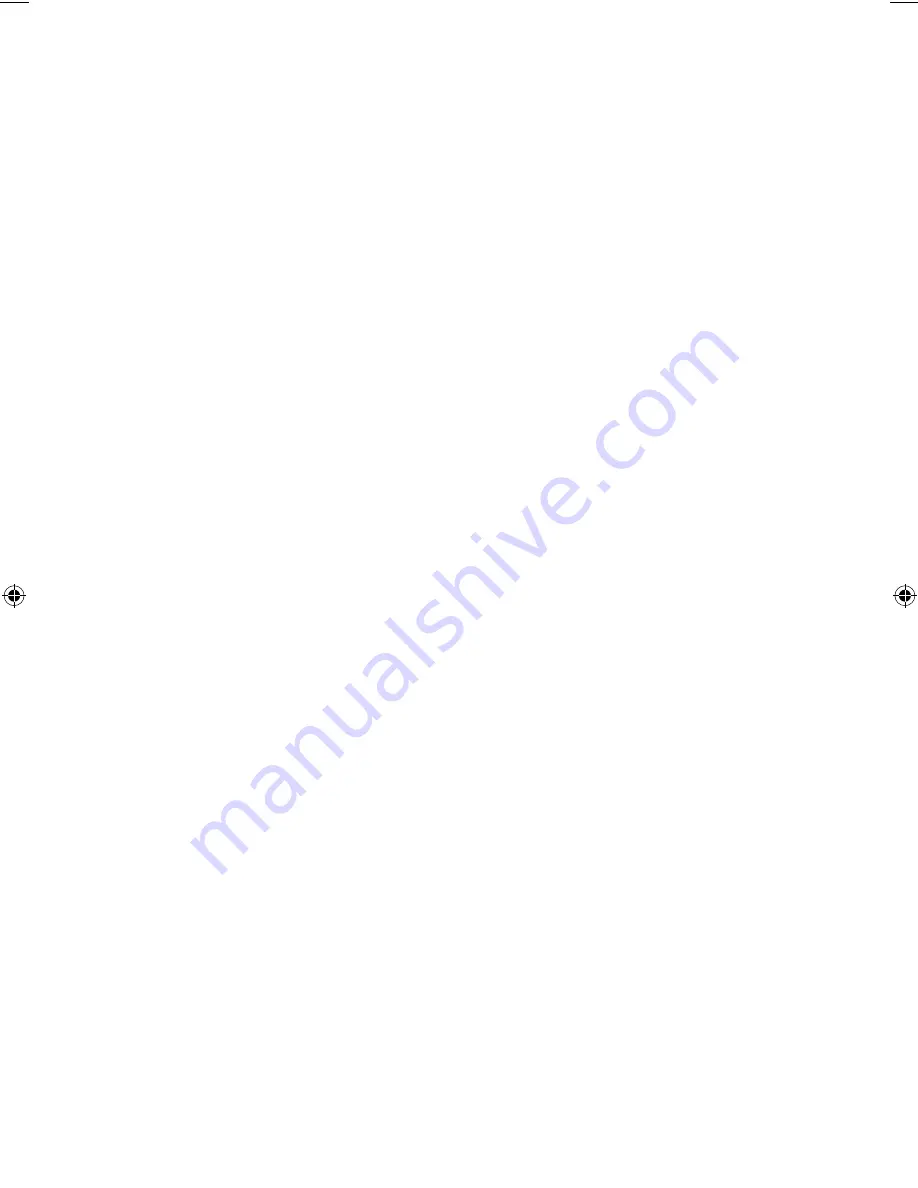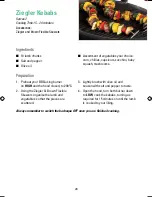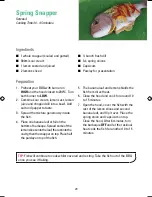
14
Cooking Hints
Controlling Flare Up
Flare-ups are caused by juices and oils from the food igniting in sudden bursts of flame
that come up over the grill. A little bit of flare up as well as the resulting smoke is a good
thing. It’s what gives barbequed food that unique outdoor flavour. But if it happens too
often, or if the flame lasts more than a few seconds, your food will char, so you need to
control it:
•
First of all, cooking very fatty foods may cause a lot of flare up. You should trim
excess fat off your meat.
•
Excess flaring usually means the burner control is up too high, turning it down
before flare-up occurs will usually prevent it happening in the first place.
•
Moving the meat away from the flare up will also reduce the problem.
•
Some very fatty foods are best cooked on the optional hotplate or in a baking dish
to collect the fat and shield the food from direct heat. Always remember to switch
the barbeque
OFF
once you are finished cooking.
Keeping Your Food Moist
It’s easy to keep your food moist and succulent on a barbeque by following these
guidelines:
•
Use tongs instead of a fork when turning meat and poultry. A fork pierces the
flesh and causes the juice to seep out.
•
Juices tend to rise to the top of a piece of meat and then settle. Each time you
turn the meat over, the juices are lost. It’s better to quickly sear the meat on each
side (about half a minute) then leave the meat to cook on one side at a time,
turning once only before serving. (An alternative method is to turn the meat every
30 seconds or so, before the juices have time to reach the top surface. This keeps
the meat succulent and juicy, but means constant adjusting while cooking.)
•
Baste food with light marinade or oil a couple of times while cooking, though
watch out for excessive flare-up if too much oil is used.
•
Using the roasting hood as outlined later in these instructions is an excellent way
to preserve moisture and succulence and takes the hard work out of barbeque
cooking.















































